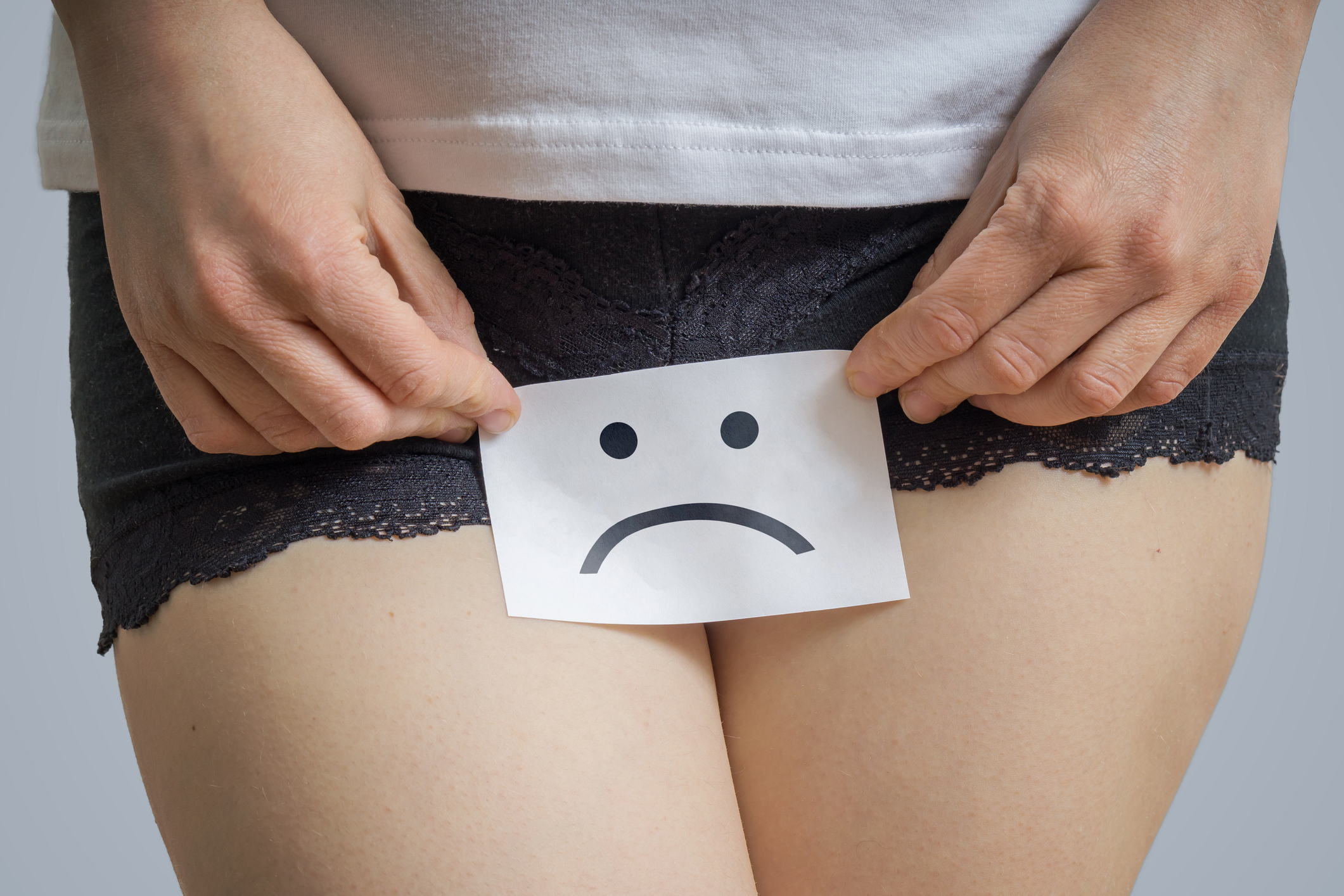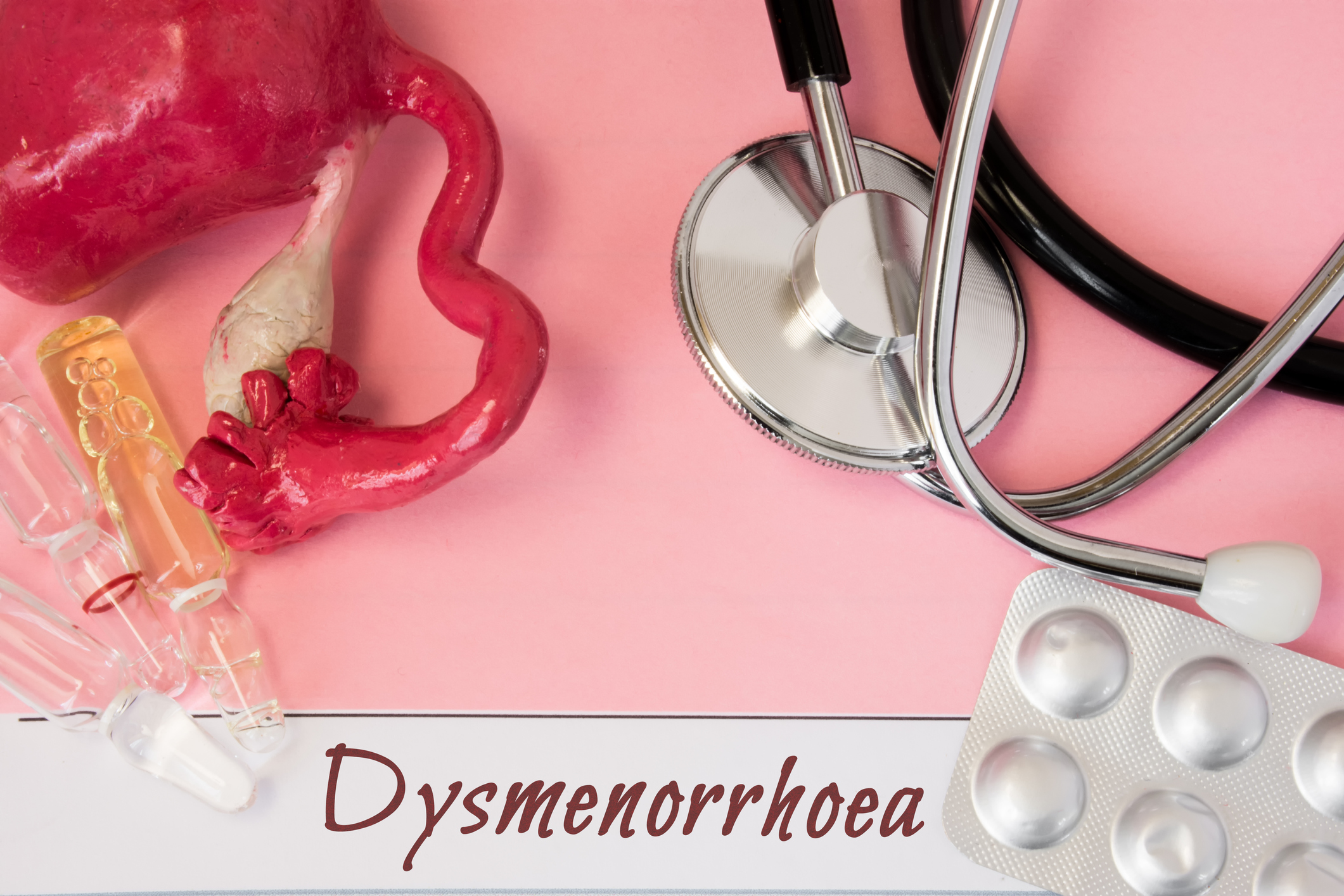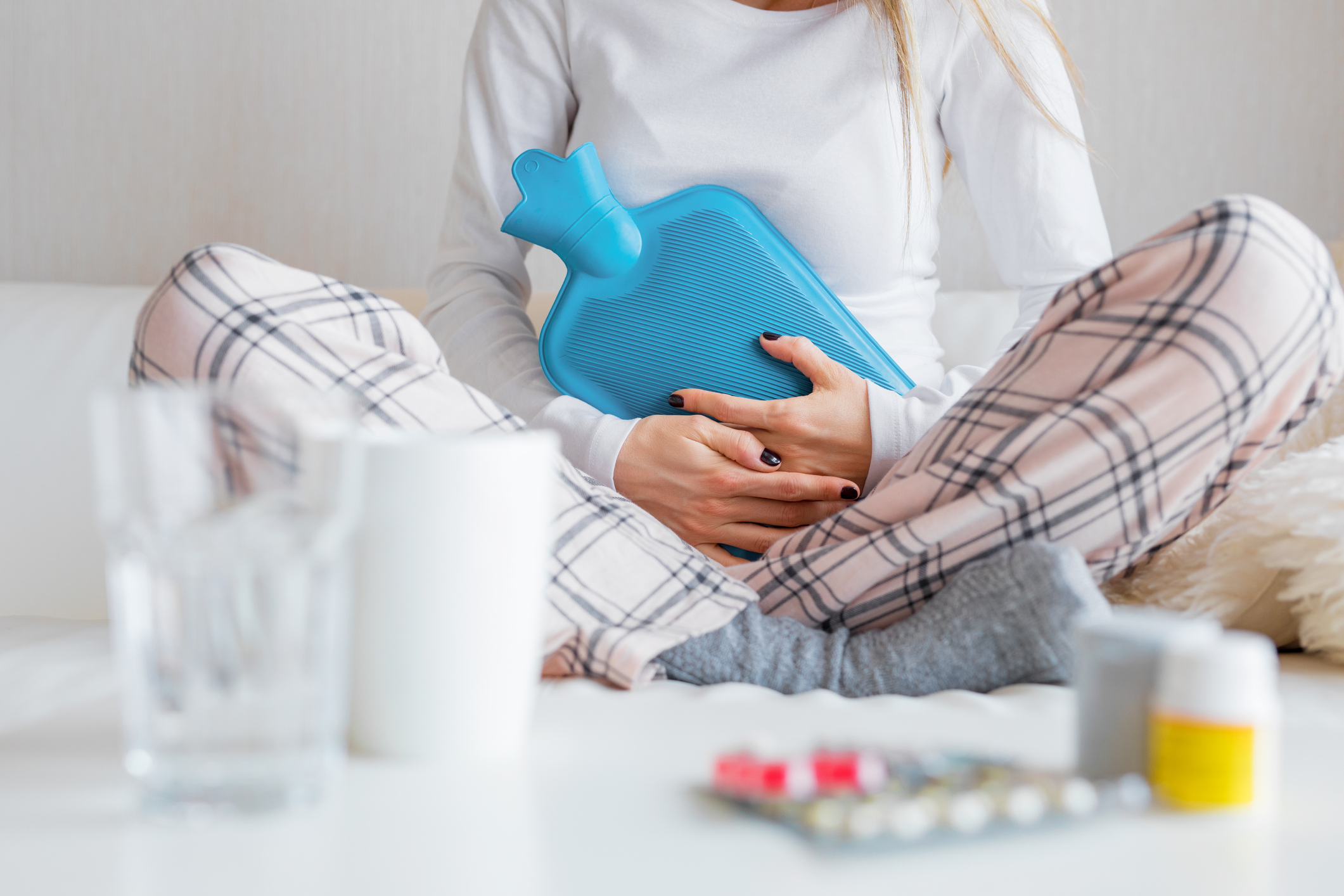- prolekare.cz - Mood disorders associated with the menstrual cycle - treatment options
- prolekare.cz - Specifics of sleep in women and its disorders
- prolekare.cz - Primary dysmenorrhea can be alleviated by yoga positions
- prolekare.cz - Pain during menstruation?
- prolekare.cz -Dysmenorrhea is undertreated in young girls and women
- prolekare.cz - Benefit of acupressure in the treatment of patients suffering from primary dysmenorrhea
- prolekare.cz - Is your menstruation an ordeal? It may be a signal of another disease!
- prolekare.cz - How to fight menstrual cramps?
- ncbi.nlm.nih.gov - Dysmenorrhea
How to relieve painful menstruation? What helps: medication, exercise, diet

Painful menstruation is a common gynaecological problem. Many women are limited in their daily life. It is the cause of absenteeism at work or school.
Article content
- What other problems are associated with menstruation?
- The causes that most often make you suffer from...
- What are the most common symptoms of dysmenorrhea?
- What diagnosis is used?
- How to stop heavy menstruation? Treatment involves both medication and exercise. Don't forget a proper diet
- Does heat and exercise help?
- What medicinal herbs can help with painful menstruation?
Painful menstruation is professionally called dysmenorrhea. Dysmenorrhea is divided into primary and secondary.
Primary dysmenorrhoea is characterised as normal menstrual cramps. The cramps occur mainly in the lower abdomen and may radiate to the lumbar region or inner thighs.
The cramps appear shortly before or simultaneously with bleeding. In the case of primary dysmenorrhoea, painful menstruation is present without the presence of other pathological findings in the pelvic area.
Primary dysmenorrhoea affects up to 50% of adolescent girls and is considered a common problem in young women. Painful menstruation is the reason for frequent absences from school or work.
Most girls develop primary dysmenorrhoea 6 to 12 months after menarche. Approximately 88% of girls who suffer from primary dysmenorrhoea have their first painful menstrual period within 2 years after menarche.
If the first painful menstrual period occurs later than 2 years after menarche, it is very likely that the patient has secondary dysmenorrhoea.
Interesting information.

Did you know...
Endometriosis affects up to 70% of adolescent dysmenorrhea patients.
Secondary dysmenorrhea is mostly suffered by women after the age of 30. Secondary dysmenorrhea is defined as pain caused by a malfunction of the female reproductive organs.
Cramps in secondary dysmenorrhoea, unlike primary dysmenorrhoea, usually come earlier and last longer.
In the case of secondary dysmenorrhoea, a pathological finding in the pelvic area is present. This finding may be related to menstrual pain.
What other problems are associated with menstruation?
Sleep and menstrual cycle
A few days or a week before menstruation, some women may have trouble sleeping (part of premenstrual syndrome - PMS). These problems may persist even during the first few days of menstruation.
Sleep problems can take the form of insomnia or an increased need for sleep during the day. Sometimes both disorders can occur together.
Did you know...
Before menstruation, women who work shifts in particular suffer from sleep problems. Shift work is a risk factor for menstrual disorders.
You can also find more information about sleep in our articles:
- How much sleep is needed? What is REM, non-REM and why do we need to dream?
- 10 simple rules for quality sleep
- What are the right positions for healthy sleep?
Mood disorders and the menstrual cycle
Mental problems during the menstrual cycle plague many women. The American Psychiatric Association has introduced a diagnosis for the mental manifestations called: premenstrual dysphoric disorder.
Premenstrual dysphoric disorder is considered the most severe form of premenstrual syndrome.
Symptoms of premenstrual dystrophic disorder appear mainly in the luteal phase of the menstrual cycle. This phase begins after ovulation and lasts until the onset of menstruation. Shortly after the end of menstruation, the symptoms disappear.
In most cases, the symptoms have a limiting effect on the woman's functioning in normal activities.
Diagnosis is based on the presence of at least 5 of the following symptoms in most menstrual cycles during the last year:
- Affective changes (emotional lability) - sudden and short-term changes in mood, feeling sad, tearful or increased sensitivity to rejection
- irritability
- anger
- depressed mood
- feelings of hopelessness
- anxiety
- tension
- disinterest in usual activities
- impaired concentration
- increased fatigue
- lethargy
- change in appetite
- hypersomnia or insomnia
- physical symptoms - tightness in the chest, joint or muscle pain, feelings of bloating, weight gain
The above symptoms appear before the start of menstruation. Later they lessen until they disappear.
Read also.
The causes that most often make you suffer from...
The occurrence of painful menstruation is caused by several factors:
- Increased production of vasopressin
- increased uterine activity
- stenosis of the cervix
- uterine ischemia
Increased prostaglandin production is considered the primary trigger for the development of painful menstruation. Increased prostaglandin production results in abnormal uterine activity and ultimately pain.
Did you know...
The highest volume of prostaglandins is in menstrual blood during the first 48 hours of menstruation. There is a proven link between prostaglandin concentration and the intensity of symptoms.
Simply put, the cause of pain during menstruation is contractions (contractions of the uterine muscles). Many of us think that we only experience contractions during childbirth. You may also experience these muscle contractions during menstruation.
If a muscle contraction is very strong, it presses on the surrounding blood vessels, thus preventing oxygen intake. Lack of oxygen causes pain.
Causes of secondary dysmenorrhea include:
- endometriosis
- the presence of an IUD
- infectious pelvic disease
- adenomyosis
- fibroids
- uterine polyps
- congenital malformations of the Mullerian ducts
- strictures of the cervix
- ovarian cysts
- Allen-Masters syndrome
Risk factors include:
- Age (most commonly 20-24 years of age).
- nulliparity (a condition in which a woman has never given birth)
- genetic predisposition (prostaglandin levels)
- early onset of menarche (first menstrual period)
- smoking
- alcohol
- stress
What are the most common symptoms of dysmenorrhea?
Typical symptoms include:
- stabbing pain in the abdomen
- feeling of pressure in the abdomen
- pain in the lumbar and sacral region
- with severe cramping, vomiting and loose stools
The following symptoms are very common in primary dysmenorrhoea:
- Vomiting
- headache
- fatigue
- diarrhoea
With age, the symptoms of primary dysmenorrhoea gradually disappear. Also, after childbirth, there is often a spontaneous disappearance of symptoms.
In secondary dysmenorrhea, the following often occur:
- Dyspareunia
- postcoital bleeding
- intermenstrual bleeding
How does it happen and why does the pain occur?
Painful menstruation is caused by contractions of the uterine musculature.
You may feel these muscle contractions even during menstruation. If the muscle contraction is very strong, it presses on the surrounding blood vessels and thus prevents oxygen intake.
The lack of oxygen causes pain.

What diagnosis is used?
The diagnosis of painful menstruation is based on the following information about the patient and the examination:
- Medical history
- history of infectious diseases
- regularity of the menstrual cycle
- the presence of an IUD
- fertility problems
- bimanual gynaecological examination
- imaging methods - pelvic ultrasound, magnetic resonance imaging
- diagnostic laparoscopy

How to stop heavy menstruation? Treatment involves both medication and exercise. Don't forget a proper diet
The following groups of drugs are used to treat pain:
1. Analgesics, non-steroidal antiphlogistics
Drugs from the analgesic group (paracetamol) act in the central nervous system. Their effect is to reduce the intensity of pain signals to the brain. They also prevent the release of substances (prostaglandins) that increase the sensation of pain.
Drugs from the group of non-steroidal antiphlogistic drugs (ibuprofen, naproxen) are in most cases the drugs of first choice. Their effect is to inhibit the production of prostaglandins and so can suppress pain.
The difference in mechanism of action between analgesics and NSAIDs is that NSAIDs act in the central nervous system (brain, spinal cord) and reduce the intensity of pain signals.
Analgesics block the production of prostaglandins. They act at the specific site of pain where they help to relieve pain.
Tip:
It is best to take these medicines when you are not yet experiencing pain.
That is, 2 to 3 days before your period.
This way, menstrual pain will not even occur.
2. Spasmolytics
Drugs from the spasmolytic group are used when the effect of analgesics or non-steroidal anti-inflammatory drugs is insufficient. Then a combination of painkillers with spasmolytics is recommended.
The effect of spasmolytics is to relieve smooth muscle spasms. It is used when pain has already arisen.
Over-the-counter spasmolytics are available in the pharmacy.
3. Hormonal contraceptives
Taking hormonal contraceptives is considered a type of cramp prevention.
Hormonal contraceptives have the following effects:
- prevents ovulation
- suppresses the growth of the uterine lining
- reduces the production of prostaglandins
By reducing the production of prostaglandins, the occurrence of cramps and pain is suppressed. Approximately 90% of women who have received this treatment have reported an improvement in their condition. The onset of the effect of the treatment occurs in approximately 3 to 4 months.
When using hormonal contraceptives, prostaglandin levels in menstrual blood are lower than in women who do not suffer from painful menstruation. This reduction is due to suppression of endometrial growth and prevention of ovulation.
Contraception and young women: what are its benefits and risks?
4. Minerals
In the prevention and treatment of primary dysmenorrhea, it is recommended to take preparations containing magnesium. The effect of magnesium is to reduce the frequency and intensity of pain.
It has a myorelaxant (helps to relieve cramps) and vasodilating (dilates blood vessels) effect. It improves the general blood circulation and relaxation of the uterus. At the same time, it reduces the level of prostaglandins in menstrual blood.
What kind of diet should we prefer in order not to suffer from pain during menstruation?
In order to live our days in the best possible well-being, we should eat the following foods:
- calcium-rich leafy greens, broccoli, soy, almonds, poppy seeds.
- high in antioxidants - cherries, blueberries, dark chocolate, broccoli
- rich in omega-3 fatty acids - fish (mackerel, salmon), Brussels sprouts, walnuts
- vegetable oils
On the contrary, we should avoid:
- white bread
- sugar
- animal fats
- Caffeine
- Alcohol
- tobacco
Does heat and exercise help?
Heat can also provide relief from pain. You can apply a warm compress to the lower abdomen. Various gel pads are available in the pharmacy. But you can also use a thermophore. This provides relief from muscle pain, rheumatism or after an injury.
The thermophore is very simple to handle. Just fill it with warm water and apply it to the painful area.
If you are in good physical condition, you will manage the pain better. It is recommended to exercise at least 5 times a week for 30 minutes. But even with physical activity, we should be careful and not put too much physical strain on the body.
One of the popular physical activities for women is practicing yoga. In one research, experts focused on the effect of performing yoga postures in the second half of the menstrual cycle.
As a result of the study, it was found that after performing yoga postures, women experienced a reduction in the intensity and duration of menstrual pain.
How to practice yoga during menstruation?
Moderate hatha yoga, restorative yoga and yin yoga are considered appropriate styles. You should indulge in a longer shavasana or yoga nidra. A quiet pranayama is recommended. You should focus on meditation. It is recommended to practice at a slower pace.
Sitting and lying asanas are recommended before and during menstruation, especially those that relax the hip joints and massage the lower abdomen.
Many women also turn to a physiotherapist for treatment of painful menstruation.
Some of the physiotherapy techniques that are used in the treatment of primary dysmenorrhea include:
- manipulative therapy
- acupressure
- techniques to normalise intra-abdominal pressure
Rehabilitation will improve the patient's circulation, metabolism and normalize the function of internal organs.
The result is pain relief.
What medicinal herbs can help with painful menstruation?
In the pharmacy you can find many teas that can help relieve menstrual pain. The most commonly used medicinal herbs include: St. John's wort, St. John's wort and chamomile.
Many people think that herbal teas cannot harm us or affect the effects of certain medications. However, the opposite is true. Medicinal herbs contain many substances that can react with different medications and affect their effect.
Therefore, it is important to consult a pharmacist before taking tea.
In most cases, painful menstruation does not immediately indicate a serious problem. For some, however, it may indicate that something is wrong in your body. For this reason, painful menstruation should be consulted with a gynaecologist.
Interesting resources










